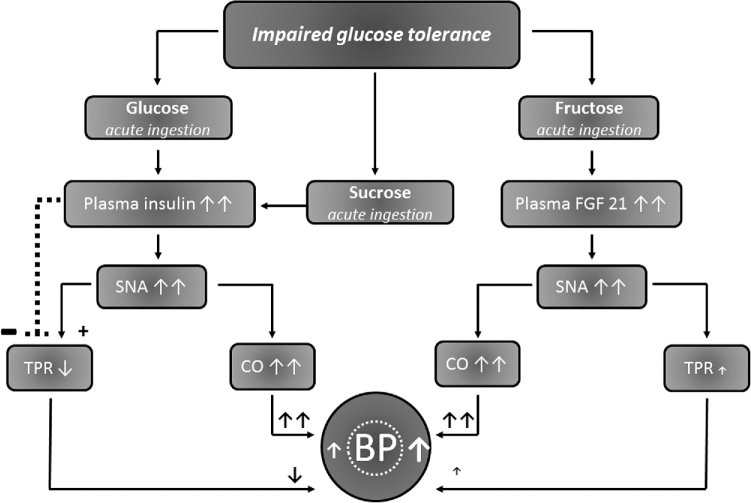FIGURE 2.
Schematic depiction of the proposed mechanisms by which blood pressure is hypothesized to affect glucose, sucrose, and fructose responses in subjects with impaired glucose tolerance. It is suggested that in a state of impaired glucose tolerance, which is characterized by elevated resting insulin and sympathetic nerve activity, an additional surge in insulin in response to the ingestion of sucrose will further raise SNA and therefore impact on TPR. This potentially raises blood pressure because of an attenuated vasodilatory effect of insulin on the vasculature owing to concurrently elevated SNA. Furthermore, in response to fructose ingestion, FGF-21 impacts centrally and raises SNA, and could therefore lead to further increases in CO and TPR. This, in turn, elevates the blood pressure to an even higher level than in glucose-tolerant subjects. BP, blood pressure; CO, cardiac output; FGF-21: plasma fibroblast growth factor 21; SNA: sympathetic nerve activity; TPR: total peripheral resistance; ↓, decrease; ↑, increase; ↓↓, pronounced decrease; ↑↑, pronounced increase; —, inhibition; +, augmentation; =, unchanged.

